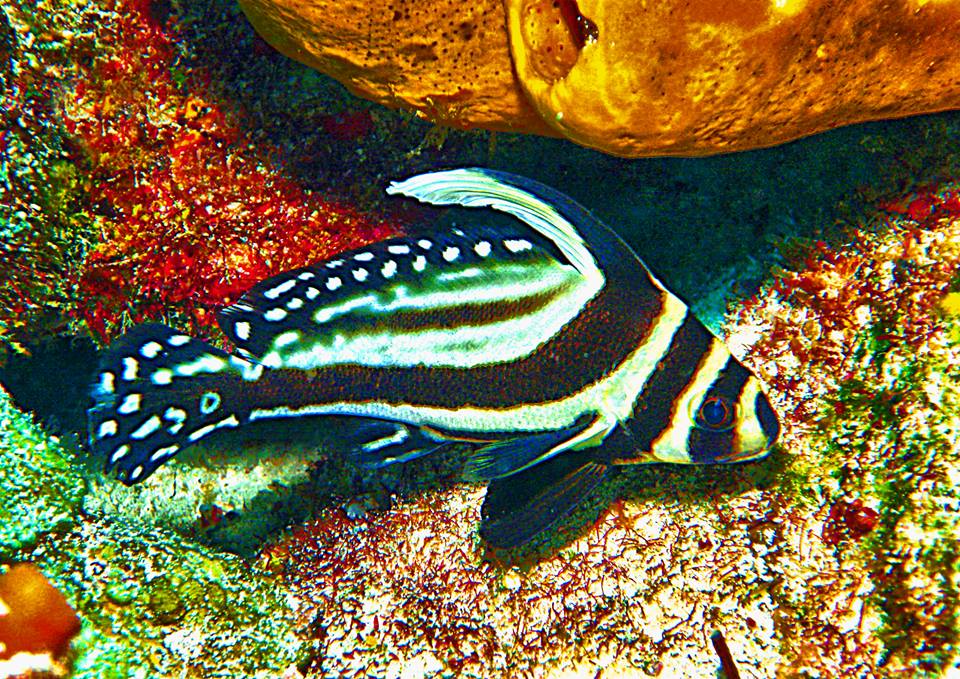Our divemasters love to find and show off these beautiful Spotted Drums (Equetus Punctatus), which may also correctly be called Spotted Ribbonfish, Highhats, and a few other less common names. They are lovely to watch and make great photo subjects if you’re patient, because they swim in repetitive patterns and therefore are predictable. Their name “drum” comes from the drumming or croaking sounds the males make by beating their abdominal muscles against their swim bladders.
Spotted Drums are most commonly found in protected reef areas under ledges and in the mouths of small caves at depths from about 10-feet to 100-feet. This species is widespread throughout the warmer, tropical waters of the Atlantic Ocean from south Florida to Brazil, in the Gulf of Mexico, around the Bahamas, in Bermuda, and of course in the Caribbean.
Spotted Drums are normally secretive, solitary creatures who leave their protective environments to feed nocturnally on crabs, shrimps, and marine worms. Juveniles are known for their extremely long, slender dorsal fins, which become shorter as the fish matures. As they age, their bodies also thicken and they develop spots on their second dorsal fins and tails. Spotted Drums grow up to 9-1/2 inches long and are believed to live up to 5 years. They are preyed upon by larger carnivorous fish and prized and captured by sellers of saltwater aquarium fish.
Little is known about the reproductive cycles of Spotted Drums. But based on other members of their Sciaenidae family, the males make their drumming noises to attract females and release their sperm when the females release their eggs.

